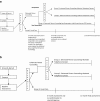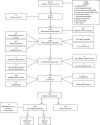Lessons learned when innovations go awry: a baseline description of a behavioral trial-the Enhancing Fitness in Older Overweight Veterans with Impaired Fasting Glucose study
- PMID: 22866170
- PMCID: PMC3411119
- DOI: 10.1007/s13142-011-0075-6
Lessons learned when innovations go awry: a baseline description of a behavioral trial-the Enhancing Fitness in Older Overweight Veterans with Impaired Fasting Glucose study
Abstract
Individuals diagnosed with impaired glucose tolerance (i.e., prediabetes) are at increased risk for developing diabetes. We proposed a clinical trial with a novel adaptive randomization designed to examine the impact of a home-based physical activity (PA) counseling intervention on metabolic risk in prediabetic elders. This manuscript details the lessons learned relative to recruitment, study design, and implementation of a 12-month randomized controlled PA counseling trial. A detailed discussion on how we responded to unforeseen challenges is provided. A total of 302 older patients with prediabetes were randomly assigned to either PA counseling or usual care. A novel adaptive design that reallocated counseling intensity based on self-report of adherence to PA was initiated but revised when rates of non-response were lower than projected. This study presents baseline participant characteristics and discusses unwelcome adaptations to a highly innovative study design to increase PA and enhance glucose metabolism when the best-laid plans went awry.
Figures
References
-
- Centers for Disease Control and Prevention. National Diabetes Fact Sheet: National estimates and general information on diabetes and prediabetes in the United States, 2011. Atlanta, GA: US Department of Health and Human Services, Centers for Disease Control and Prevention; 2011.
Grants and funding
LinkOut - more resources
Full Text Sources
Medical




